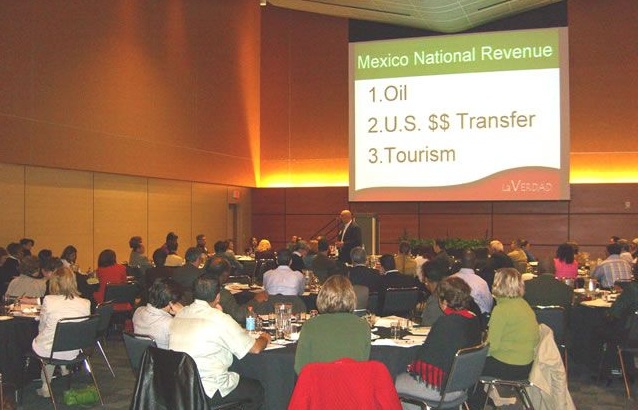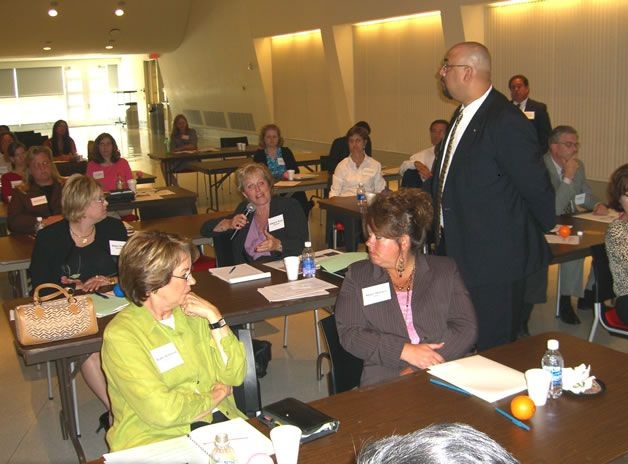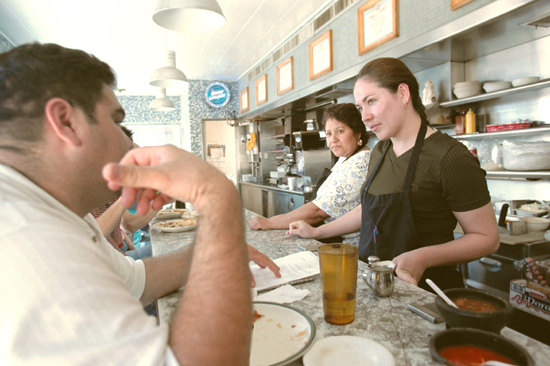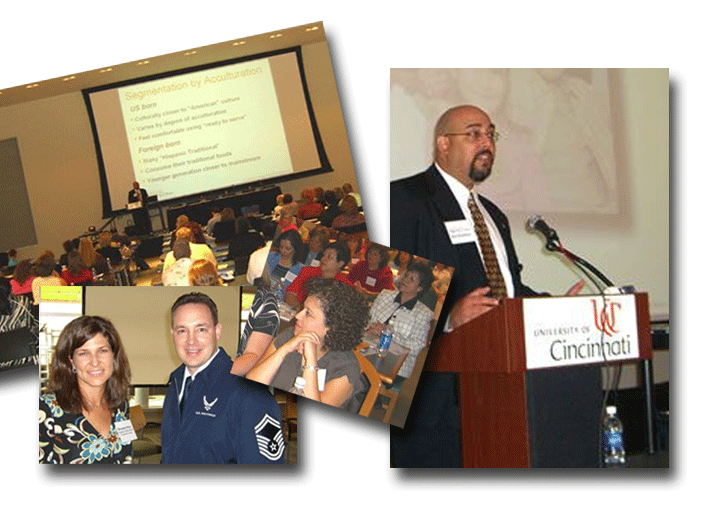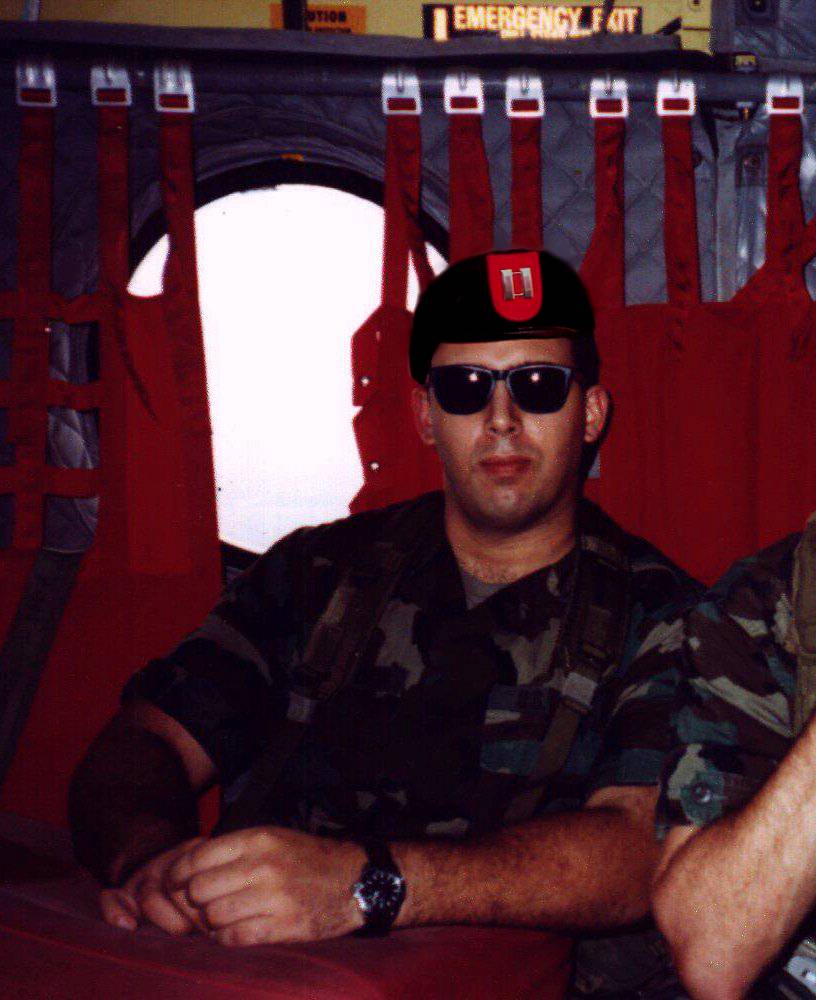The Courier-Journal | By: Wayne Tompkins
For companies like Kroger, building loyalty among the nation’s 41 million Hispanics isn’t just a nice enhancement to the bottom line.
“It’s a survival issue,” said Phil Watson, the grocery chain’s regional manager of human resources development, at last week’s Hispanic marketing seminar at McKendree College in Louisville.
The seminar’s title, perhaps not coincidentally, was “Understanding the Hispanic Market: Business Opportunity or Matter of Survival?”
About 40 representatives of banks, health-care systems, other industries and government agencies came to gain insights into what engages Hispanic consumers. Their buying power is already at parity with African Americans’ and, by the end of the decade, is expected to surpass it.
Cincinnati-based LaVERDADMedia & Marketing, using U.S. census data, has calculated that the Louisville area alone has 5,650 Hispanic households with $183 million in annual disposable income.
“Somebody is going to get that business, and our goal is to get that share and more,” said Watson, who attended the seminar.
His goal was twofold: “Merchandising to the Hispanic market as well as recruiting both hourly and management people from that market,” Watson said. “We need some help in finding avenues into those markets.”
As businesses like Kroger have learned, the diversity of the Hispanic market means that isn’t an easy task.
For example, generally, Central Americans don’t eat hot chilies, guacamole is not eaten in the Caribbean, and while Cubans enjoy black beans, Puerto Ricans prefer pinto beans, said Glenn Rodriguez, McKendree’s dean of Kentucky campuses, a speaker at the seminar.
While “torta” is a sandwich in Mexico, it’s a quiche in Spain.
“The most important principle is talk to your customer,” said Mike Robinson, president of LaVERDAD. “If your customer is Latino, then your customer is unique.”
At the same time, broader patterns do exist.
For example, years of research have found that Hispanics have much greater brand loyalty than other consumers.
“You want to try to be first in your marketing,” said Rodriguez. “Shake their hand, look them straight in the eye, say, ‘Hola, buenos dias,’ and make them feel at home so that they feel you have that confidence.”
They also tend to be less impulsive buyers, not only closely inspecting the contents in a box but also sometimes taking more time before deciding whether to make a significant purchase.
Hispanics return fewer items, don’t often call a store to ask questions and make only limited use of credit, Rodriguez said.
The good news for grocery chains, consumer research has found, is that Hispanic families tend to cook at home and eat out less.
The grocery business is learning more and more about its newest consumers, Rodriguez said. For example, they don’t like processed food. “So cans of corn, cans of beans, they’re not going to go to it,” he said.
As a consumer, Louisville resident Juan Peña sounds like any other customer. He looks for quality, value and customer service.
As a Hispanic consumer, the native of Hidalgo, Mexico, said he gravitates to where he feels most welcome — such as the La Tropicana store on Preston Highway, which specializes in Latin American merchandise. Seeing brands he knows from back home means a lot, he said.
“If you see familiar products in place in a store, for example, I almost feel like I am home,” said Peña, a field supervisor for the Kentucky Commission on Human Rights who attended the seminar. “This is one of the reasons that the little Hispanic grocery stores are surviving and proliferating across the country. It’s because of the environment itself, how it feels. When you go in there, you feel like you are in Mexico. You are home.”
That’s not to suggest that retailers downsize their stores and adopt a Latin American flavor, Rodriguez said. In fact, Hispanics in the United States have embraced big-box stores like Wal-Mart and other retailers that carry products and offer services that appeal to the market.
Robinson, from LaVERDAD Marketing, said the homework required is meticulous, but the rewards are great.
It starts with learning the specific region of Latin America — and the specific region of the country — where core customers came from.
In Kentucky, for instance, there are differences in the consumer tastes of Mexican immigrants in Shelbyville, where many come from the Mexican state of Veracruz, and Lexington, where large numbers are from Michoacan.
Even Mexico’s small, neighboring Central American countries are vastly different in terms of culture, work ethic and politics, Rodriguez said. The common language in Belize is English.
Established companies doing business in Latin America have long known about the region’s diversity. Goodyear, for example, uses five words for “tires” depending on which country in the region it is targeting.
“You can’t just dip your toe in the water,” said Robinson, an Arizona native raised by Mexican grandparents. “You have to have a plan and a strategy.”
Action, he said, might include radio and print advertising in Spanish-language media as well as marketing efforts such as staffing a store event to attract Hispanic consumers.
“Imagine a household doing its grocery shopping, and one household demographically has one more body in it, on average, than another household,” said Robinson, pointing out Hispanics’ family size. “Who cares what they look like or what language they speak?”


